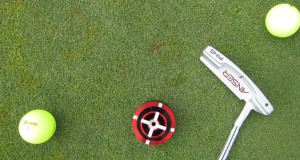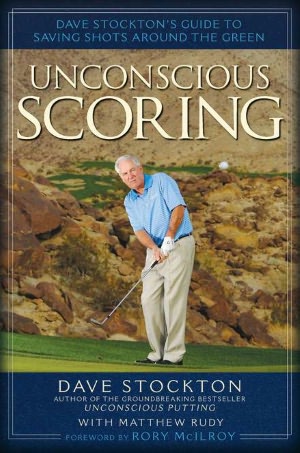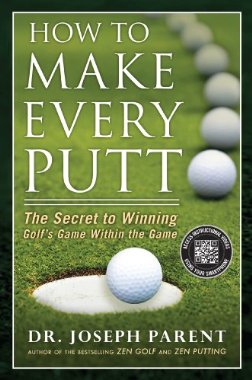 While the weight of your putter is important, the way that weight is balanced can be equally vital to your performance.
While the weight of your putter is important, the way that weight is balanced can be equally vital to your performance.
Putter balancing falls into two general categories: toe hang (also called toe droop) and face balanced. Mallets tend to be face balanced, while blades more frequently have toe hang.
So what does this mean to your game? A face balanced putter will generally appeal to golfers who prefer a more straight-back-and-straight-through type of putting stroke, while a putter with toe hang will generally favor those with an inside-to-inside, or arcing, stroke. You may want to choose your putter accordingly.
To determine the balance of a putter, simply stick out your hand out and place the putter on an outstretched finger. Find the spot on the lower part of the shaft where you can balance the putter on that finger without assistance from your other hand.
If the face of the putter remains parallel to the ceiling or sky when balanced on your finger, then the putter is face balanced. If the face angles toward the ground, the putter has toe hang.
Toe hang comes in varying degrees. If the toe points straight down at the ground, it’s called 6 o’clock, alluding to the hour hand on a clock. If the toe hangs only slightly, it’s at 4 o’clock. A “toe-down” putter (ie: 6 o’clock) favors a more pronounced arc.
Why do toe-hang putters favor an arcing stroke? Simply put, the sensation of more weight at the toe encourages the putter to “open and shut” in relation with the arc of the stroke.
To obtain more insight into this subject, PutterZone.com consulted Mike Sandoval, putter development manager for Never Compromise and Cleveland Golf.
“What matters most is getting the putter face square, or perpendicular, to the target line at impact,” Mike says. “The more a golfer arcs his or her stroke, the more toe-weighted you want the putter in order to bring it square at impact. Generally speaking, some golfers should use a blade, and others shouldn’t.”
Mike is quick to point out, however, that there are always exceptions to the rule. “Sometimes I see pros who use blades and take them straight back and through with great results,” he says
 Ultimately, Mike says, it’s about your own personal comfort and tendencies. In other words, it’s a matter if, not how, you consistently get the face square to the target at impact. Still, it’s important to know that putter balancing can affect your performance, and that finding the right balance will raise your game.
Ultimately, Mike says, it’s about your own personal comfort and tendencies. In other words, it’s a matter if, not how, you consistently get the face square to the target at impact. Still, it’s important to know that putter balancing can affect your performance, and that finding the right balance will raise your game.
P.S. Portions of this piece are excerpted from PutterZone.com’s Ultimate Putter Buyer’s Guide ($7), a groundbreaking e-booklet designed to empower you with crucial fitting information before you spend big bucks on a putter. Click here for more information.
 PutterZone – Best Putter Reviews
PutterZone – Best Putter Reviews




Why do you make clickable images that are the same size as the image in the article???
That putter looks kind of complicated to balance and handle it at the beginning but with the practice, the handle of the face and the stick will be less heavy.
That putter looks kind of complicated to balance and handle it at the beginning but with the practice, the handle of the face and the stick will be less heavy.